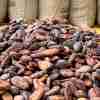Data | An average of 7.6 million doses administered daily in first 10 days of September
The Hindu
To vaccinate all adults by the end of 2021, 10.3 million doses have to be administered daily on average in the remaining days
The average rate of daily in the first 10 days of September was the highest since the drive began in January. However, it was still below the rate required to innoculate all adults by December 31. To vaccinate all adults by the end of 2021, 10.3 million doses have to be administered daily on average in the remaining days. Between September 1 and 10, 7.6 million doses were administered on average daily in the country compared to the 6.2 million doses administered daily between August 21 and 31. The average daily doses administered in several , including Uttar Pradesh, Maharashtra and West Bengal, increased in the first 10 days of September compared to the last 10 days of August. However, they fell in States such as Madhya Pradesh, Andhra Pradesh and Karnataka. From September 1 to 10, 7.6 million doses were administered daily on average. To vaccinate all adults by December 31, 10.3 million doses need to be administered daily on average in the remaining days.More Related News













